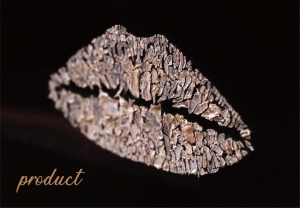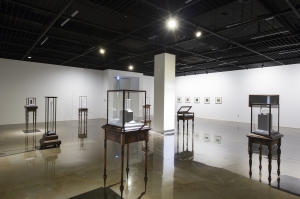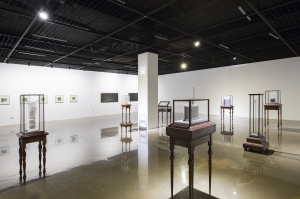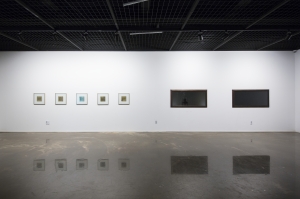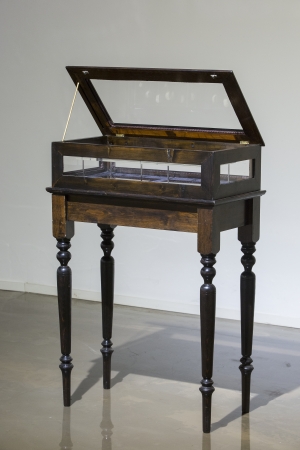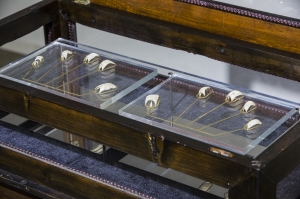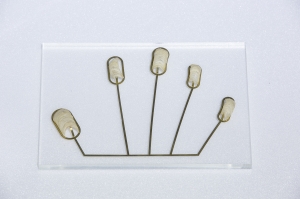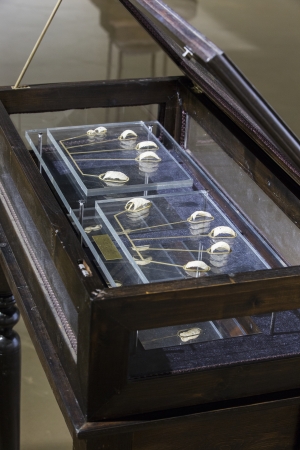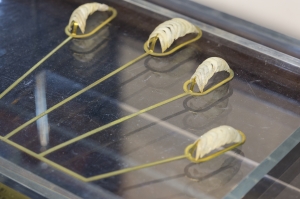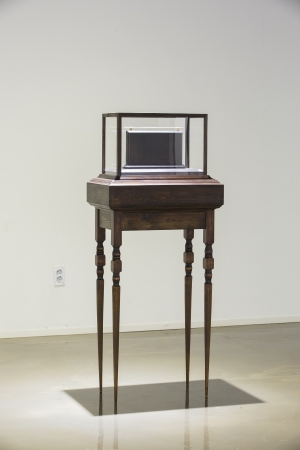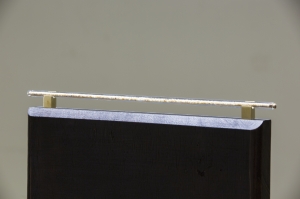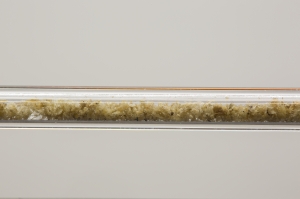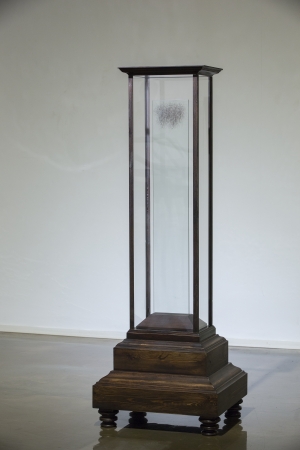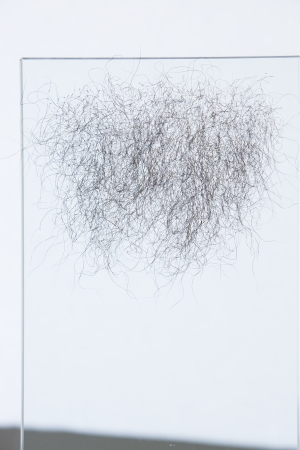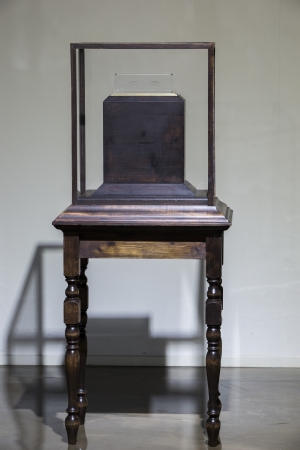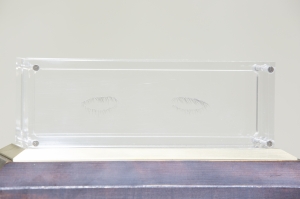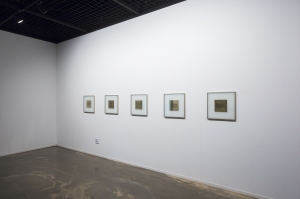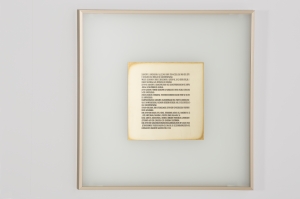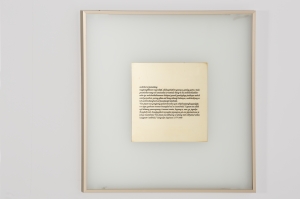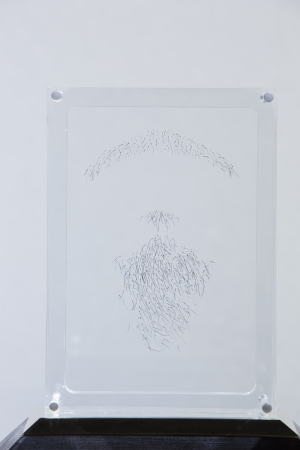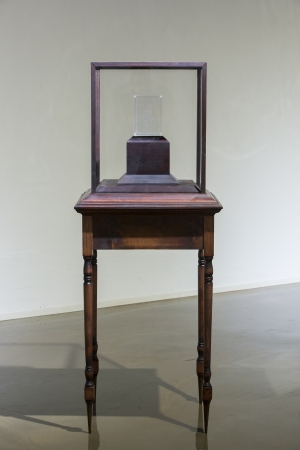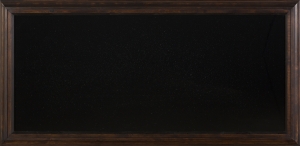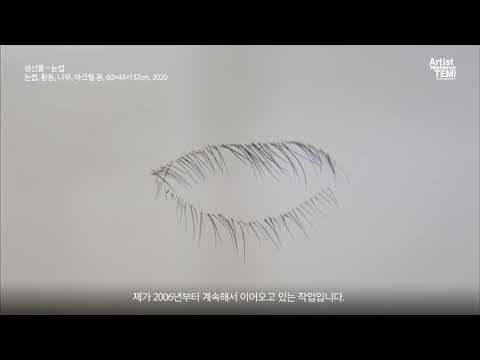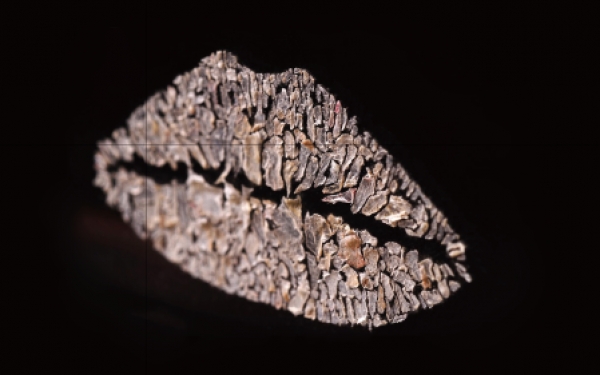전시 EXHIBITION
생산물
대전문화재단에서 운영하는 시각예술레지던시 대전테미예술창작센터는 7기 입주예술가 강철규, 김철환의 전시를 7월 14일(화)부터 7월 26일(일)까지 개최한다. 올해 2월부터 입주하여 작품활동을 펼치고 있는 강철규, 김철환은 각자의 프로젝트를 진행하고 그 결과를 전시로 발표한다. 7기 입주예술가는 올해 12월까지 멘토링, 전시 등의 지원을 받으며 대전테미예술창작센터에서 작업을 이어나갈 예정이다.
입주예술가 김철환은 인간 몸에서 나오는 부산물을 소재로 작업한다. 그는 머리카락, 각질 등 인체에서 중요한 역할을 하는 ‘생산물’이 몸과 분리되는 순간, 혐오의 대상이 되다는 것에 주목하였다. 같은 의미로 인간이 만들어내는 집, 자동차와 같은 물질과 문화와 같은 비물질도 사람에게 필요가 다했을때는 쓰레기, 인습 등 혐오의 존재로 인식되는 것에 사유를 신체탈각물을 이용한 설치작업으로 풀어낸다.
------------------------------------------------------------------------
‘내가 생산한 것’에 관한 또 다른 시선
홍경한(미술평론가)
1. 손톱과 발톱은 손가락 및 발가락을 덮고 있는 판상의 각질이다. 두피의 표피가 탈락하여 발생하는 비듬과 사람 및 동물의 피부에서 자라는 가느다란 실 모양의 여러 털(머리카락, 음모, 수염 등), 땀샘이나 이도선의 분비물인 귀지 등은 인체의 한 부분임과 동시에 때가 되면 잘라내야 하고 세척해야만 하는 물질이다. 각각 신체를 보호하는 역할을 맡고 있지만 관리가 허술할 경우 인상에 좋지 않을 뿐더러 위생상의 문제도 발생한다.
포유류 입 가장자리 위아래에 도도록이 붙어 있는 얇고 부드러운 살인 입술껍질도 마찬가지이다. 건조한 환경에 노출되거나 고단한 경우, 그리고 알레르기성 반응에 등에 의해 생기는 이것은 껍질을 강제로 뜯어내면 상처가 되기도 하며, 마치 갈라진 논바닥 같은 모습에선 그 자체로 시각적 불편함을 심어준다.
작가 김철환은 이처럼 손톱, 발톱, 머리카락, 귀지와 같이 평범하지 않은 재료로 작품을 만든다. 어쩌면 가장 하찮고 비속하며 지저분한 탓에 ‘아브젝트’(Abject) ‘아브젝트’(abject)는 대소변이나 구토물, 시체와 같이 혐오와 더럽다고 인식되는 대상을 가리킨다.
에 가깝다 해도 과언이 아닌 신체 부산물을 수집해 보물이나 명품처럼 진열한다. 흡사 박물관에서나 볼 수 있을 법한 투명하고 우아한 케이스에 정성스럽게 담아 전시장에 내거는데, 필자의 시각엔 타인의 혐오를 고의적으로 유도함으로써 명제된 규칙을 교란 정해놓은 규칙에 또 다른 규칙을 가공하기에 꽤나 혼란스러운 측면이 있다는 뜻이다.
시키는 작업이다. 그렇기에 단순히 그로테스크하거나 혐오스럽다고만 보긴 어렵다. 재료에 관한 특별함으로는 만족할 수 없는 측면이 읽힌다,
사실 그의 작품들은 예술에 관한 사색의 입장에서 해석하면 일종의 추(醜)의 미(美)와 맞닿는다. 일반적으로 추는 미적 규범에 어긋나며 미적 인식을 저해하는 반(反)미적인 것을 의미한다.(대체로 미의 대립 개념으로 본다.) 추를 이념의 순수한 현현을 저해하는 악이나 혐오스러움, 사악함 등의 부정적인 현상으로 치부하며 배척한 고전예술에선 특히 그렇다. 이러한 현상은 20세기 초까지 이어진다.
그러나 동시대 이르러 추는 미적 범주의 일부로까지 격상됐다. 향기와 악취가 그러하듯 이 둘은 매우 깊은 역학관계를 유지하며 미는 추를 통해 자기의식을 확인한다. 다시 말하자면 추가 있기에 미의 현현이 가능하다고 보는 게 옳다.
실제로 미가 존재하지 않는다면 추도 존재하지 못한다. 추가 없다면 미의 개념 또한 성립하기 어렵다. 더구나 추 역시 미적 감정을 유발한다. 즉, 추는 그 자체로는 절대적 가치를 갖지 않지만 어떤 경우 대상 고유의 인식적 미를 넘어 미적 가치를 상승시키는 요인이 되곤 한다는 것이다. 특히 ‘쾌’(快)’ ‘쾌’와 관련한 일상의 예를 들자면 아름다움과는 거리가 먼 공포영화를 보면서 즐거움과 쾌락을 느끼는 것을 생각해볼 수 있다. 먹을 때마다 힘겨워하면서도 다시 찾곤 하는 매운 음식과도 유사하다.
와 밀접한 관계를 맺는다는 점에선 미와 추는 서로 통한다.
김철환의 작품 역시 같은 선상에 놓인다. 비듬으로 만든 평면작품 <생산물(우주)>는 제목에서처럼 밤하늘 별무리를 보았을 때의 오묘한 감정을 심어주고, <생산물> 시리즈의 손톱과 발톱, 머리카락 등을 모아 배열한 작품에선 그 어떤 진귀한 보석 못지않은 우아함을 뽐낸다. 하나, 재료를 알고 나면 멈칫하게 된다. 재료에 대한 인식이 명료해질수록 심리적 위축도 가중된다. 보편적인 현상일 것이다.
그런데 위 기술한 추와 미의 관계에서마냥 아이러니하게도 이 재료들은 추에 포함되고 있음에도 미적 유형의 구성요소로 부족함이 없다. 비듬, 손톱, 하수구에 걸린 머리카락 모두 미적 인상에 활기를 불어넣는 자극제로서 제 기능에 충실하다. 격 있게 꾸며진 진열장 안에 있기에 그래서인지 모르지만, ‘기괴함’이 환상으로 전이되는 듯한 느낌을 넘어 묘한 숭고함까지 인다. 이는 김철환 작가의 작품에서 엿볼 수 있는 미학적 특징이다.
2. 김철환이 이러한 재료로 작품을 만드는 데에는 여러 가지 이유가 있을 것이다. 앞서 언급한 것처럼 추의 미를 통해 새로운 미적 패러다임을 제시하기 위한 시도일 수 있고, 현실이 더욱 추하기에 펼쳐놓는 시니컬한 행위일 수도 있다. 또는 쓸모없고 버림받는 것들에 대한 위로와 반성의 시선이 담긴 결과물인지도 모른다.
작가의 발언은 제일 마지막 추정에 근접해 있다. 그에 따르면 인간에 의한 가공된 사물과 그렇지 않은 자연적 생산물 모두 저마다의 필요성을 지니며, 시효에 관한 문제의식을 공유케 한다. 그는 이와 관련해 “인간의 내부적 생산물과 외부적 생산물을 동일시하는 형식을 취하여 그 적나라한 표면을 드러냄으로서 스스로 성찰과 깨달음에 다가가려는 시도”라고 말한다. 이어 “인간의 몸에서 생겨나는 각질 및 각종 털과 손톱과 발톱, 피부의 껍질까지 수집하고, 그 재료를 다시 원래의 형태로 재현하여 박물관의 보물, 명품관의 명품처럼 진열하는 작업을 반복적으로 진행하고 있다.”고 덧붙인다. 김철환, 작가노트 중
여기서 눈여겨봐야할 부분은 “인간의 내부적 생산물과 외부적 생산물을 동일시하는 형식”과, “성찰과 깨달음에 다가가려는 시도”이다. 전자는 후자를 위한 과정이며, 후자는 전자를 텃밭으로 설명된다. 이 가운데 첫 번째인 “인간의 내부적 생산물과 외부적 생산물을 동일시하는 형식”은 작가의 의도와 관점을 관통한다. 또한 김철환이 오랜 시간 지속해온 작업들이 그 의도와 관점을 증명한다.
일례로 어딘가 버려진 사물을 거창하게 진열한 작품인 <바르게 사용하기 프로젝트-벽 조명>(2018), <바르게 사용하기 프로젝트-청자>(2018), <바르게 사용하기 프로젝트-꿀단지>(2017) 등은 인간에 의한 인간이 만든 인간의 유용성에 기댄 생산물이지만, 어느 순간 제 역할을 다하면서 이전의 유용성은 탈각된 것들이기도 하다. 이를 작품으로 옮겨온 사물들은 재개발 지역이나 버려진 어딘가에서 취득한 것으로, 과거에는 유효한 사용처를 지녔으나 현재는 그렇지 못한 것에 관한 비유가 녹아 있다. 비유를 확장하면, 거대한 시스템에 의해 작동하는 사회와 인간자체를 빗대며 그 사물들을 더 이상 불필요한 존재로 보는 것이 아닌, 하나의 인격체로 바라보는 작가의 눈길을 발견할 수 있다.
한때는 쓸모 있다 여겨 만들어낸 생산물들의 탄생과 소멸, 소비의 과정에서 생성되는 다양한 관계들을 버무려놓았다.
작가가 비듬이나 머리카락, 귀지 등을 이용한 작품들도 같은 의미이다. <생산물(입술)>에서부터 <생산물(발톱)>, <생산물(귀지)>, <생산물(우주)>에 이르기까지, 이 작품들은 특정한 역할을 담당해온 갖가지 신체 생산물이 몸에서 떨어져 나오는 순간 본래부터 불필요한 것이었던 양 치부되는 상황에 맞춰져 있다. 필자는 그 상황에 상당히 진지하게 접근하는 작가만큼이나 소소한 것에 가치가 부여될 수 있다는 사고와 기록으로서의 결과물 모두 주목할 만하다고 평가한다.
결국 그의 작업은 인간이라는 공통분모에 인위적 생산물인 사물과 신체의 탈각물을 동일한 선상에 놓음을 하나의 방식으로 삼아 ‘가치란 무엇인가’를 묻는다. 인간 내부 생산물인 각질과 잘 다듬어 고급스럽게 포장된 진열장인 외부 생산물을 통해 추와 미의 경계를 지정하며, 비주체적인 요소이면서 한 사람의 유전적 특성을 통한 모든 타자와의 경계를 특유의 비유와 상징으로 풀어낸다.
두 번째인 “성찰과 깨달음에 다가가려는 시도”는 <바르게 사용하기> 시리즈와 좌대 위에 올려놓음으로서 미적 권위를 부여한 일련의 작업 전반에서 드러난다.(이 또한 방식의 일부이다) 신체에서 이탈한 물질을 원래의 형태로 재현하고 보관한다는 것도 그렇고, 그것이 작품이 되어 새롭게 위치할 수 있도록 하는 모든 과정 역시 그 시도에 다름 아니다.
이는 동일시의 부정에 대한 부정, 경계 저편에 놓인 주체의 배제를 경계하기 위한 표현이며, 사회 속 여러 작용의 주관자로서 각각의 주체를 위협하는 것이자, 위협 받는/ 받아온 것들을 다시 주체화하는 것으로 풀이할 수 있다.
3. 결과적으로 김철환의 작품은 신체로부터 분리된 생산물과 인간에 의해 만들어진 생산물에 정량의 분동을 얹힌 후 그것을 재차 예술생산으로 연결해놓고 있다. 작가는 인간이든 물건이든 생성과 소멸의 우주적 순환 원리에선 한 뼘의 차이조차 없다는 자신의 생각을 흥미롭게 풀어놓고 있다.
그러나 이 흥미로움은 존재성에 대한 자문에 이를 때 비로소 완결된다. 몸에서 떨어져 나온 것들은 덧없는 것들일 수 있으나, 그렇게 불필요하다 여겨지는 것들을 되레 박제된 존재로 전환시킴으로서 진정한 가치에 대해 되짚는 구조인 셈이다.
사물을 말하는 듯하지만 김철환의 작업은 사실상 태어나 살다가 죽고 다시 태어나는 생의 반복적 순환(12개, 30개라는 진열장의 일정한 배열의 반복이나, <바르게 사용하기>와 <생산물> 연작처럼 작품 제목의 반복 등도 순환-패턴을 고지하는 중요한 자료이다. 이 반복에는 작가의 동일 노동에 관한 반복도 형식의 일부로 들어선다. 이해를 위해 작가의 발언을 덧붙이자면 다음과 같다. 그는 작가노트에 “우리가 겪는 반복은 태어나는 순간부터 죽기 직전까지 멈추지 않고 일어납니다. 노동과 상상을 통해 만들어지는 무수한 것들과 몸에서 때가 생겨나는 것도 마찬가지죠. 작품은 궁극적으로는 삶 그 자체를 이야기하지만 그것이 지속 가능하도록 충실하고 진실하려면 겸손하고 진지해야 한다고 이야기합니다.”라고 썼다.
)과 인간 삶, 존재성 및 시간성 등이 고루 배어 있다. 그의 말마따나 “인간이 생산해낸 것들에 관한 과장과 오만함을 근본적인 형식을 통해 의도적이 아닌 오히려 필연적이란 것”을 동시에 이야기 한다.
한편으론 우리가 어떤 대상을 대하는 태도와도 무관하지 않다. 여기에 아무 것도 아닌 변기(뒤샹) 하나를 예술의 위대함으로 둔갑시킨 힘과 영향력에 대한 메시지, 비자연적인 것이든 아니든 생산과 소비의 갈등, 신체의 어느 한 부분에서 우주로까지 이어지는 작품을 통해 쓸려나가는 것과 신체든 현실이든 새롭게 채워지는 것들, 만들어내는 것과 만들어지는 것에 대한 불가항력적 현상에 대한 연민과 성찰이 복잡하게 투사되어 있다.
다만 개념에 의한 명석한 인식의 완전성을 담보하지는 않는다. 불완전하고 유추의 결이 다분하다. 그러나 그것이 김철환 작업의 특징이 된다. 쉽게 읽히지만 해석의 여지는 그 이상으로 확장적이다. 일관되게(혹은 반복적으로) 사용하고 있는 작품의 키워드인 ‘내가 생산한 것’에 관한 또 다른 시선(필자를 포함한)은 그렇다.
Another viewpoint on ‘what I produced’
Hong Kyung-Han (art critic)
1. Fingernails and toenails are dead skin of flap that covers fingers and toes. Dandruff generated from scalp epidermis and various hair (hair, pubic hair, beard, etc.) in thin thread shape grown on human and animal skin, and earwax, a secretion of the sweat gland or the celuminous gland are parts of human body and at the same time when the time comes, they have to be eliminated and cleansed. They play their respective roles of protecting the human body, but if not properly managed, they could give a bad impression and also cause health problems.
It is also the same with lip shell, thin and smooth skin that is stuck tightly on upper and lower lips of a mammal’s mouth. It is formed when exposed to dry environment, or due to tiredness or allergic reaction, and if it is removed compulsively, it can cause cuts to the lip. When it looks like cracked rice paddy, it just causes visual discomfort.
Artist Kim Chul-Hwan makes his artwork by using such unusual materials like fingernail, toenail, hair, and earwax. They are byproducts of the human body which can be even compared to ‘abject Abject refers to those that are recognized as disgusting and dirty such as urine and feces, vomitus, or corpse.
’ as they are most trivial, coarse, and dirty. He collects them and displays them as if they are treasure or luxury items. He carefully put them in a transparent and elegant container, which can be used in museums, for display in an exhibition. To my perspective, his work is to disturb It means it is quite confusing as another rule is added on top of already established ones.
established rules by intentionally inducing other people’s disgust. Accordingly, it cannot be regarded as simply grotesque or revolting. There may be aspects that the specificity of material is not sufficient.
If interpreted from perspectives on artistic contemplation, his artworks may be connected with beauty of ugliness. In general, ugliness refers to the opposite of beauty, that is outside of rules on beauty and that compromises the recognition of beauty (usually, it may be a concept opposite to beauty). Such was the case in classic art, which excludes ugliness, by regarding it as a negative phenomenon like evil, disgust, or viciousness that disturb the pure manifestation of ideology It continued till the early 20th century.
.
However, in this period, ugliness is upgraded to be a part of beauty. As in the case of scent and bad smell, these two maintain very deep dynamic and beauty confirms its identity based on ugliness. In other words, it would be right to say that manifestation of beauty is possible only when there is ugliness.
In fact, if there is no beauty, there is no ugliness. If there is no ugliness, it is difficult to have a concept of beauty. Moreover, ugliness also induces emotions of beauty. In other words, ugliness does not have its absolute value but in some cases, it goes beyond an object’s unique beauty of recognition and it can be a factor in upgrading the value of beauty. In particular, beauty and ugliness are connected as they are closely linked to ‘pleasure’ Citing some daily examples on ‘pleasure,’ we can think of a case that people feel pleasure and enjoyment by watching a horror movie, which is far from the concept of beauty. It is also similar to have spicy food even though we have difficulties in eating them at all times.
.
Kim Chul-Hwan’s artwork may be viewed in the same context.
As explained above in the relationship between ugliness and beauty, these materials are included in ugliness, but it is not insufficient for these to be counted as components for beauty. Dandruff, fingernails, and hair caught in drain properly function as stimulant that vitalize aesthetic impression. It may be the case as they are displayed in elegantly decorated case, but ‘bizarreness’ is transformed into fantasy, and even beyond that, we can feel the sublime. This is aesthetic feature that we can catch a glimpse of from Kim’s artworks.
2. There may be several reasons why Kim Chul-Hwan used such materials to make his works. As mentioned before, it may be an attempt to present new aesthetic paradigm based on the beauty of ugliness, or it can be a cynical act to show the reality which is uglier. Or it may be an outcome based on perspectives of consolation and self-reflection for those that are useless and abandoned.
Kim’s statement is quite similar to the last assumption. According to him, objects processed by human and natural products have their own respective necessity, and a critical mind on prescription is shared. He responded to this, “by applying a form that regards internal products of human as same with external products and exposing naked surface, it is an attempt to be closer to self-reflection and enlightenment.” He added, “I collected dead skin and various hair produced by the human body, fingernails and toenails, and reproduced those materials into their original form, and displayed them like treasure in a museum and masterpieces in luxury goods store. I have been repeating the process. Kim Chul-Hwan, Artist’s note
”
What requires attention here is “a form that regards internal products of human as same with external products,” and “an attempt to be closer to self-reflection and enlightenment.” The former is a process for the latter and, the latter explains the first as a garden. Here, the first part, “a form that regards internal products of human as same with external product” penetrates the artist’s intent and viewpoint. The works that Kim Chul-Hwan has been doing for a long time demonstrate his intent and viewpoint.
For example, the artworks that displayed abandoned objects in grand style, such as
. Various relations established during the process of birth, death and consumption of products that were made, since they deemed to be useful, are all mixed.
The artist’s works using dandruff, hair and earwax have all the same meaning. From
In the end, his work poses the question, ‘what is value?’ by putting object, artificial product and exuviated objects from the human body in the same context under the same common denominator, which is human. Based on dead skin, which is internal human product and external products, which is displayed in luxuriously well-made cases, the boundary of ugliness and beauty is designated and the boundary against all other humans through one human’s genetic features, non-independent element, is interpreted as unique metaphor and representation.
The second part, “an attempt to be closer to self-reflection and enlightenment” is manifested through
This is denial to identification denial, and an expression to look to the exclusion of identity that lies on the other side of boundary. It threatens each individual identity as a supervisor of various reactions in the society, and it can be interpreted as setting those being threatened/having been threatened as subjects again.
3. As a result, looking at Kim Chul Hwan’s artwork, the weight of a certain quantity is added to the product separated from human body and to the product made by humans, and once again they are connected to art production. The artist interprets his thinking in an interesting way that there is no difference at all in circulation principle in the universe on creation and extinction of human or object.
However, such interesting point can only be concluded when we arrive at questioning of existence. Objects cut off from human body may be transient, but by turning those deemed unnecessary into permanently preserved objects, we can revisit real values.
It may seem that they talk about objects, but his artworks equally covers repetitive circulation in life which includes birth, life, death, and then back to birth (repetition of a certain arrangement in 12 or 30 display cases or repetition of artwork titles such as the series of
) and life of humans, existence and temporality. As he mentioned, at the same time he talks about “exaggeration and arrogance on the products made by human are inevitable, not intentional, through fundamental format.”
On the other hand, it is not un-related to our attitude that we deal with a certain object. A message on power and influence that turned a trivial urinal (Duchamp) into a great artwork, conflict between production and consumption whether they are unnatural or not, things that are taken off from a certain body part through a work linked to the universe, things newly filled with whether in our body or in reality, and compassion and reflection on uncontrollable phenomenon on things that we make and that are made: all these are projected in a complicated way.
However, it does not guarantee perfection of clear recognition based on concept. There is much of imperfection and assumption. However, that is a feature of Kim Chul-Hwan’s artwork. It is easily read but there is bigger room for interpretation, for further expansion. That is another (including myself) viewpoint on ‘what I produced’ which is the keyword for his artworks that has been consistently (or repetitively) used.
- 기간
- 2020-07-14 ~ 2020-07-26
- 관련행사






